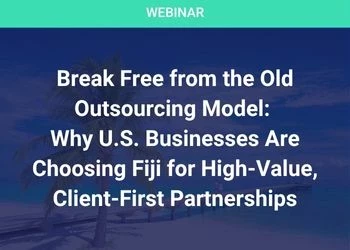Roundtable: Talent Management in Shared Services
Add bookmarkParticipants
Debbie Vander Bogart
Senior Director, Shared Services Center
LEVI STRAUSS & CO.
Antonia Watson
Formerly Executive Director
MORGAN STANLEY
Troy Evans
Director of Shared Services
CH2M HILL
Moderator
Walt Simpson
Partner
SCOTTMADDEN
Walt Simpson: Getting the right staff into a shared services center, developing them and retaining them—these are constant challenges to shared services leaders. I’d like to pose these questions to our panel today, starting with recruitment. What characteristics do you look for when you are recruiting for your shared services business?
Antonia Watson: As a global investment bank, lots of our global recruitment efforts are targeted at hiring front office investment bankers from top notch Ivy League universities—where our brand name attracts top talent. In Hungary, however, where we have a business services center, Morgan Stanley is not yet a household name—so
that presents more of a challenge. And as we are generally not able to hire people with all the necessary skills already in place, we practice skills-based hiring and run competency-based interviews. What we look for is a certain attitude to risk, integrity, and an ethical approach. We’ve hired nearly 700 staff on this basis over the past two years so we feel we are certainly on the right track.
Troy Evans: Generally, I’d agree with Antonia’s comments. We are looking for a variety of skill sets. Some people come to us wanting an entry-level job in accounting – others don’t really know what they want but would like to work for us. So we look at traits. Can this person fit into and work within our culture? Will they be able to interact in our culture? We try to get to the real personality of a person. Being customer relationship oriented is key.
Walt Simpson: So in addition to having the right functional and technical skills, having the right personality and characteristics is important. Debbie, what is your approach at Levi Strauss?
Debbie Vander Bogart: I agree with what’s been said earlier. But I’d add two comments. Firstly, yes, we have a competency level to fill, be it F&A professionals, or customer service professionals; but we also need our values and our philosophy to be upheld. So we need the right passion. We won’t always get the specific fit we may have in mind, but we are looking for open-minded people who can learn quickly.
Walt Simpson: Once you’ve got the people you need in your organization, how do you help manage their careers? What are the development opportunities you have in place?
Debbie Vander Bogart: This is a challenge for us. Many people see shared services as too "dead end." There is a tendency for shared services to be relatively "flat" in terms of organization, with not many levels—so the perception is that there are not many career paths. Our response at Levi Strauss was to develop "job families" across the organization, whereby every role has a description in our job family matrix. People are encouraged to "spider-web" across the organization instead of move "up the ladder." We don’t really talk about "ladders" any more. Where we do still need to make improvements is in building stronger interactions to get people moving across the company—both out of shared services as well as into shared services. At the moment we’ve had people move out of shared services to business units, but not enough migration into shared services. So although we are sending people out—we are not getting a lot of people back!
Walt Simpson: Antonia, at Morgan Stanley you run an offshore shared services in Hungary. How do you manage career pathing and development there?
Antonia Watson: Well, we are lucky because we are still growing in Hungary, so even after just two years’ existence we’ve already had a lot of rotations. Hungary presents a good opportunity to act as a seed organization for other locations. We hire a large number of university graduates into processing roles, but we have the option of moving them up the value chain. As we encourage the migration of more complex work from core locations into our shared services, we are able to offer more interesting career paths. Thus, someone might start with an invoice processing role, but escalate to expense management and ultimately to a business unit control function. One challenge we are coming up against is that of striking a balance between not letting people get stagnant in their jobs—i.e., offering advancement opportunities, while at the same time ensuring that staff stay long enough to master their roles—so maintaining staff in their existing jobs. It’s the challenge of matching an ambitious workforce with the need to run a stable business.
Troy Evans: We are in the process of rolling out our global job framework process to the whole company. We also split jobs into "job families" according to function. This shows our employees just how and where they fit into the company organization as well as how they fit into their own job family organization. It has facilitated a trend we are now witnessing, whereby staff move out of shared services into different departments. We see this as a positive, however. The framework provides a guide for employees to manage their career paths by defining where their jobs fit into the company, and it highlights promotion opportunities. Its global nature means that staff can map their jobs against the global corporation, and plan "stepping stones."
Walt Simpson: What about retention as a strategy? What are you doing to keep the
staff you spend so much time recruiting and training?
Troy Evans: I think retention hinges on three different aspects. First, you have to consider the financial characteristics of retention: People need money. Second, people are seeking interesting career paths, better jobs, and learning opportunities. And third, is what I call "devotion." This last one is important. It implies a bigger meaning to what you are doing. Our company mission, for example, is to "make the world a better place." That is a much bigger issue than processing invoices; we are changing people’s lives for the better. So this builds ideological capital—devotion. We also use the abundance theory. This means that instead of following the conventional path of moving from unprofitable to being profitable—i.e., dealing with deficit gaps—we want to move from being profitable to being extraordinary, creating an abundance gap. This is best explained by the following example. We don’t want to call a doctor when we are sick, asking him to make us better; we want to call the doctor when we feel good, asking him to make us feel great!
Antonia Watson: Troy makes a good point. There are a few things I’d add. If you are operating in an isolated center, especially in a greenfield site—i.e., away from the main business center, as is the case for Hungary—it is really important to know what the company does and what its values are. We put everyone who joins us through a "Morgan Stanley as a Business" training course, which shows new recruits exactly how we operate. So everybody who works for us understands where his or her role fits into the organization. We also celebrate the organization’s successes in other geographical areas, a recent example being sub-Saharan Africa. This links to our brand and gives people a sense of belonging to Morgan Stanley. The other issue is communication. You cannot over-communicate. In fact, you need to over-communicate. We don’t ever let a senior corporate visitor come to town without committing them to a town hall meeting or "face-time" with our staff. Our employees in Hungary probably get more access to international senior management than staff in other locations. And they appreciate the opportunity.
Troy Evans: We have several other shared services operations close to our operation. So we are competing for staff. I did see a trend of employees leaving for some of these other operations, at one stage. The "why." We needed to find out what was driving staff to leave. Was it the financial incentive of more money? We think we
have competitive pay scales so we don’t think more money will make a person after financial gain stay. On the other hand, if they were disappointed by us, I need to know. What was heartening was that some of those who left for money, later came back for the career path we offer. That is a real compliment. Even those who move into the business units and love their jobs often comment that they "sure miss the people." I’ve conveyed to the team that I want this to be a family atmosphere. I tell them that I want them to be the same person at work that they are at home. Work should be an extension of their life.
Debbie Vander Bogart: People leave for a reason. When this happens, you need to find out why—spot the trend and find out what is causing it. It is really important to understand the employee’s perspective. I am always exhorting my staff to "know everybody’s ‘it’." "It" is the thing that keeps them there. Is it salary? What do they want? Most surveys will tell you that the number one reason people leave or stay is their first level supervisor. We spend a lot of time and money in getting first level supervisors to understand how important they are in the retention equation. Our shared services values are the same as our corporate values, which are consistent
across all locations. Levi’s has had the same values for 150 years. We build our culture on the basis of these values, but it does look and feel different in the shared services center, and we are often complimented on it. This differentiation is what helps us keep our staff.
Walt Simpson: Many thanks to each of you for participating in this discussion today and for your keen insights into talent management in shared services.
Note: This discussion took place at the end of 2008. Antonia has recently left Morgan Stanley to return to New Zealand.





















